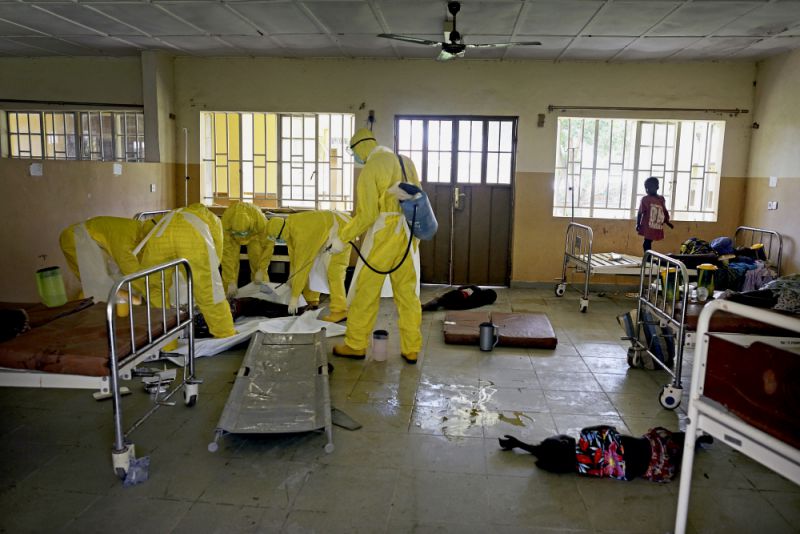By: Gareth Willmer
Send to a friend
The details you provide on this page will not be used to send unsolicited email, and will not be sold to a 3rd party. See privacy policy.
Providing Ebola treatment beds in Sierra Leone saved 40,000 lives during the 2014-15 epidemic, according to researchers.
Using a mathematical model of virus transmission, the scientists calculate that 57,000 Ebola cases were averted “as a direct result of additional treatment beds being introduced” between June 2014 and February 2015. About 70 per cent of those — 40,000 infected people — would have died if the beds had not been provided, says the study, published in the Proceedings of the National Academy of Sciences this week (12 October).
“We have certainly learned the importance of having fully equipped, appropriately staffed medical teams able to deploy rapidly as required.”
Margaret Harris, UN World Health Organization
But the researchers from the London School of Hygiene & Tropical Medicine (LSHTM) in the United Kingdom add that 12,500 more cases could have been prevented if beds were provided just a month earlier.
The study aimed to quantify the effects of different public health measures during the Ebola outbreak, says author Sebastian Funk, who researches infectious disease modelling at the LSHTM. With the epidemic on the wane, Funk says it is a good time to examine “what worked best and how much impact different measures had”.
Giving Ebola patients single beds reduces the spread of infection as they separate patients from one another and from hospital staff. Their availability also encourages people with suspected infections to come forward.
“There is relatively good information out there on when additional beds were put into place and in which hospitals,” says Funk. About 3,000 beds overall were added in Ebola centres and treatment units in the country by February, most from September 2014 onwards — thanks to funding from the Sierra Leone and UK governments, as well as from NGOs.
The findings could help improve the response to future epidemics. “I think one of the lessons you can learn from this is that you can have a really big impact with an intervention if you come in early,” says Funk.
But Sarah McKune, a public health researcher at the University of Florida in the United States, says there is widespread disappointment that the response was not even faster. “What I’m hearing from people involved is that their regret is that beds weren’t introduced sooner,” she says.
Margaret Harris, a spokesperson for the UN World Health Organization, says getting beds in place is important to show others there was a real prospect of treatment and recovery. This helped encourage people to notify Ebola teams of potential new cases and build their trust in care workers — something that was previously “sorely lacking”, she says.
“We have certainly learned the importance of having fully equipped, appropriately staffed medical teams able to deploy rapidly as required,” Harris says.
References
Adam J. Kucharski and others Measuring the impact of Ebola control measures in Sierra Leone (Proceedings of the National Academy of Sciences, 12 October 2015)














